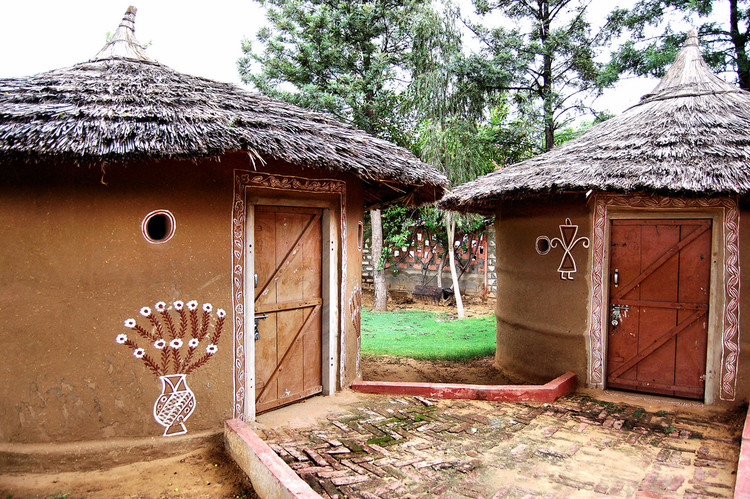
Vernacular architecture, the simplest form of addressing human needs, is seemingly forgotten in modern architecture. However, due to recent rises in energy costs, the trend has sensibly swung the other way. Architects are embracing regionalism and cultural building traditions, given that these structures have proven to be energy efficient and altogether sustainable. In this time of rapid technological advancement and urbanization, there is still much to be learned from the traditional knowledge of vernacular construction. These low-tech methods of creating housing which is perfectly adapted to its locale are brilliant, for the reason that these are the principles which are more often ignored by prevailing architects.
More on vernacular architecture after the break.
Vernacular architecture originated when mankind was forced to make use of the natural resources around him, and provide himself shelter and comfort which is responsive to the climate, a shield from the elements. It is a pure reaction to an individual person’s or society’s building needs, and has allowed man, even before the architect, to construct shelter according to his circumstance. Such simple traditions have long been regarded as backward, and have been replaced by half-digested, largely inappropriate architectural values.

The humanistic desire to be culturally connected to ones surroundings is reflected in a harmonious architecture, a typology which can be identified with a specific region. This sociologic facet of architecture is present in a material, a color scheme, an architectural genre, a spatial language or form that carries through the urban framework. The way human settlements are structured in modernity has been vastly unsystematic; current architecture exists on a singular basis, unfocused on the connectivity of a community as a whole.

Vernacular architecture adheres to basic green architectural principles of energy efficiency and utilizing materials and resources in close proximity to the site. These structures capitalize on the native knowledge of how buildings can be effectively designed as well as how to take advantage of local materials and resources. Even in an age where materials are available well beyond our region, it is essential to take into account the embodied energy lost in the transportation of these goods to the construction site.

The effectiveness of climate responsive architecture is evident over the course of its life, in lessened costs of utilities and maintenance. A poorly designed structure which doesn’t consider environmental or vernacular factors can ultimately cost the occupant – in addition to the environment – more in resources than a properly designed building. For instance, a structure with large windows on the south façade in a hot, arid climate would lose most of its air conditioning efforts to the pervading sun, ultimately increasing the cost of energy. By applying vernacular strategies to modern design, a structure can ideally achieve net zero energy use, and be a wholly self-sufficient building.

If anything is to be taken from vernacular architecture, it provides a vital connection between humans and the environment. It re-establishes us in our particular part of the world and forces us to think in terms of pure survival – architecture before the architect. These structures present a climate-responsive approach to dwelling and are natural and resource conscious solutions to a regional housing need. The benefits of vernacular architecture have been realized throughout the large part of history, diminished during the modern era, and are now making a return among green architecture and architects. In order to progress in the future of architecture and sustainable building, we must first gain knowledge of the past and employ these strategies as a well-balanced, methodical whole to achieve optimum energy efficiency.

References: Lindsay Asquith & Marcel Vellinga, Nick Ladd, Adrian Atkinson Photographs: Flickr: seier+seier, Justin Gaurav Murgai, Anguskirk, Jason Unbound, Tom Parnell

